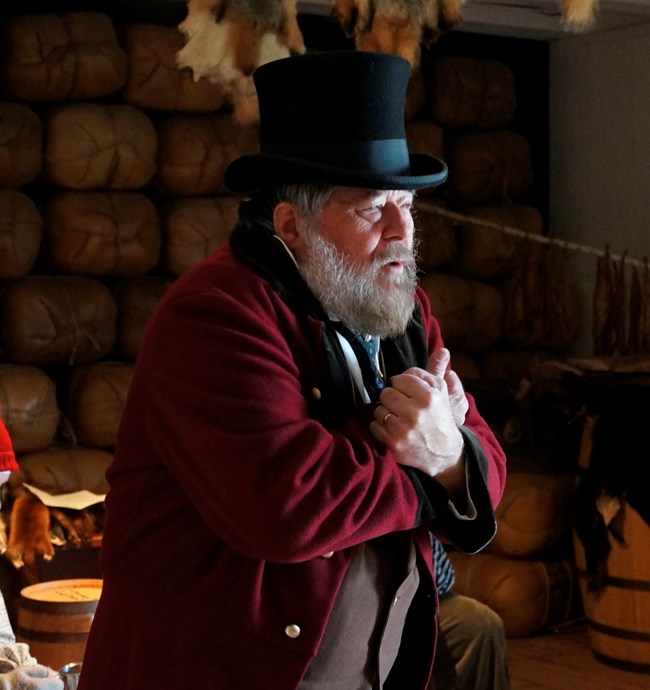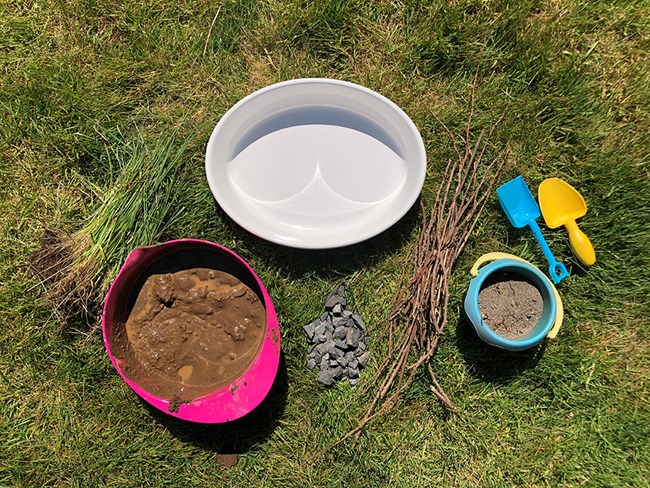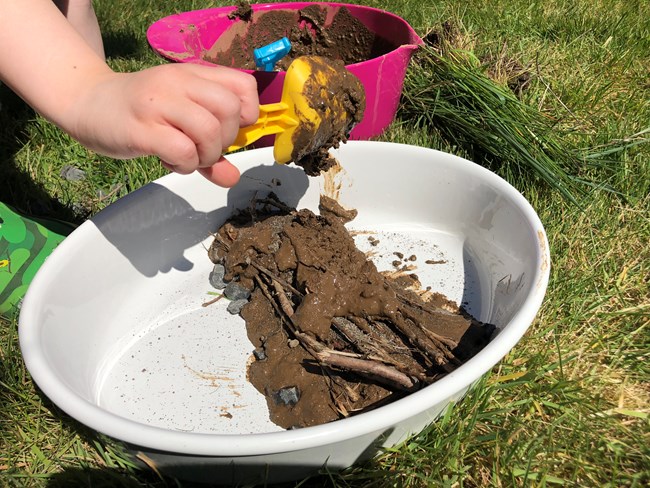Last updated: September 22, 2022
Article
Build a Beaver Dam

NPS Photo / Kent Miller

NPS Photo
How did the voyageurs know if a beaver nearby? They could look for signs of a beaver, like chewed logs or branches, or footprints. But finding a beaver dam was a sure sign that a beaver was nearby!
Read on to learn more about beavers and beaver dams, then experiment with making your own dam at home!
What is a beaver dam?
A beaver dam is a dam made of logs and mud, built by a beaver. A dam is something that blocks or slows down the flow of water in a river or a stream. A lake or pond is created behind a dam.Why do beavers build dams?
Beavers build dams across streams to create a pond where they can build a "beaver lodge" to live in. These ponds provide protection from predators like wolves, coyotes, or mountain lions.What do beavers use to build their dams?
Beavers build their dams out of trees and branches that they cut using their strong incisor (front) teeth! They also use grass, rocks, and mud.Do beavers live in a beaver dam?
Nope! Beavers build dams so that they have a safe pond where they can build their beaver lodge. A beaver lodge is built out of twigs, sticks, rocks, and mud, and has an underwater entrance (beavers are very good swimmers!). Inside their lodge, beavers have a safe place to sleep, raise their babies, stay warm in winter, and hide from predators.Why are beaver dams important?
Beaver dams don't just create a place for beavers to live! The ponds that beaver dams create are important habitats for other wetland animals, including birds and fish. These ponds also help control soil erosion and reduce flooding. Beavers are a "keystone species." This means that they are important to an ecosystem because they modify, or change, their environment in a way that helps other animals and plants, too.Why were beavers important animals at Fort Vancouver?
A long time ago, in the 1700s and 1800s, beaver fur was used to make hats and other fancy clothing worn by people in Europe. Fur trappers in the Northwest trapped beavers so that their furs could be sent from Fort Vancouver to Europe.Did fur trappers trap all the beavers?
Fur trappers in the 1800s trapped a lot of beavers throughout North America. Today, there are not as many beavers as there were before the 1800s, but beavers are not an endangered species. There are now about 10 to 15 million North American beavers in the wild.Learn more about beaver dams:
Build a beaver dam at home!
Now that you've learned how beavers build their dams, try your hand at building a dam of your own!
Supplies
- A baking dish, plastic container, or any other waterprof container that is deep enough to hold water and your dam.
- Dam building materials: mud, dirt, sand, rocks, sticks, whatever you can find in your backyard!
- Tools you might need to build the dam, like shovels or trowels. Or just use your hands!
- Water.

Talk to a grown-up to make sure you have permission to take what you gather.
You might find sticks, rocks, sand, or plants. Use dirt and water to make mud to hold it all together.


Did the water break or go through your dam? Empty your container and try again! Remember: some water will trickle past your dam; a beaver dam on a stream or river doesn't completely hold the water back.
Did your dam hold most of the water back? Congratulations! You made a dam just like a beaver!
Did your dam hold most of the water back? Congratulations! You made a dam just like a beaver!
Find Your Virtual Park
Explore more at-home-activities from Fort Vancouver National Historic Site.
